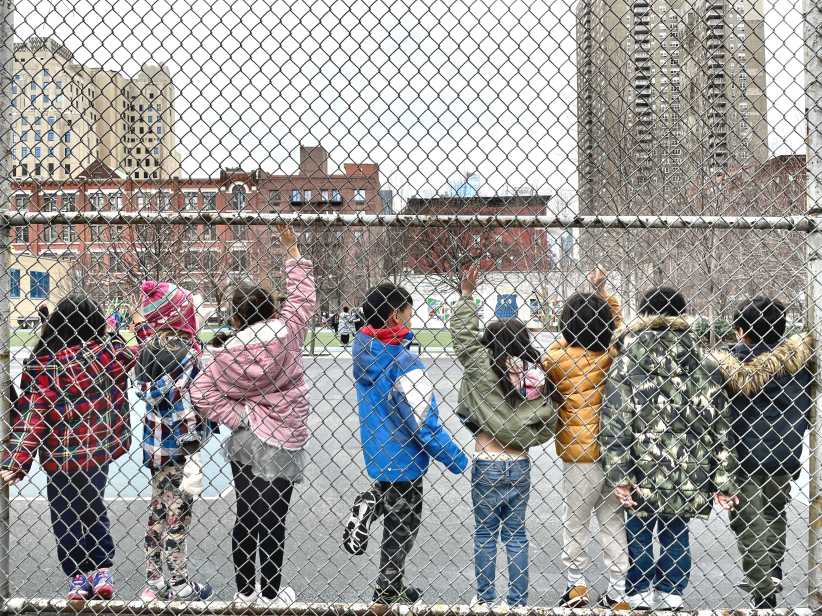The luster of the first day of school has surely worn off by now, and families have settled back into the daily grind—including some facets of pre-pandemic life that we may not have missed, like early mornings and traffic jams. It’s a challenging transition for everyone. Kids who were kindergarten students in the spring of 2020 had only six months of regular instruction before moving into lockdown, and now they’re in second grade. So, it comes as no surprise that some of these kids are showing signs of stress.
8 Ways to Help Students Struggling in School
We spoke with an educator and a psychologist about ways to support your child during this school year.
1. Talk with your kids.
More importantly, listen. Your first source of information about your child’s life is your child. It’s particularly important now to keep the lines of communication open, emphasizes Amanda Fuhrman, who teaches third, fourth and fifth graders in Edison, NJ. Dedicate time for your kids to talk to you when they know they’ll have your full attention and ask open-ended questions. “They tell you the truth very often when you leave it open for them to tell you,” Fuhrman says. For example, instead of saying, How excited are you to be back at school? Ask: What happened that was exciting today? Follow up by asking them to tell you more, or ask how something made them feel, and don’t forget to thank them for sharing with you. “If we don’t know what they’re thinking, then it’s really hard to help them,” Fuhrman says.
2. Practice patience and keep any meltdowns in context.
Sarah Bren, Ph.D., a child and family psychologist in Pelham, says that one of the things parents should expect to see, whether their kids are flourishing with the structure school offers or feeling anxious about the separation it requires, is some degree of restraint collapse. This refers to the phenomenon of kids melting down when they get home after holding it together all day at school.
During the day, Dr. Bren explains, “they’re following the rules, they’re doing all the things that they’re supposed to do,” but then there’s a sudden release of those restraints “as soon as they’re home with that safe person.” This can be helpful to remember in the moment when your child’s behavior takes a turn. “The fact that they do it with us, while hard to receive, really shows how safe they feel with us,” Dr. Bren says. “Sometimes us doing a good job looks like our kids melting down with us.”
3. Provide a bridge between school and home.
In anticipation of restraint collapse, Dr. Bren suggests giving kids 20 minutes of undirected time, and your full attention, upon returning home for the day. Put your phone away for these minutes and simply be with your kids, following their lead. “That twenty-minute upfront investment of your time will pay off in spades for the rest of the night,” Dr. Bren says. “You’re filling them up a bit and that’s going to go a long way.”
RELATED | Thinking of hiring an online tutor to help your struggling child?
4. Create focused opportunities for your child to socialize outside of school.
If your child is experiencing social anxiety after a year spent learning remotely, playdates can be a helpful way to flex those relationship muscles. When using playdates as a tool to strengthen social skills, Dr. Bren recommends limiting them to about 45 minutes and providing the structure of an activity. In these cases, she says, it’s also important to end on a high note. If things are going well, rather than pushing them further, say something along the lines of, “This is so great! Let’s do this again.”
5. Establish and maintain routines.
“I’ve seen a lot of kids struggle with the structure of school,” Fuhrman says. Accustomed to attending school in their pajamas while lying on the couch, simply getting dressed and out the door is a big change for kids. If getting ready in the morning is a struggle, try making a checklist, with pictures for younger children, of what your child needs to do before they leave the house in the morning:
- brush teeth
- get dressed
- eat breakfast
- put homework in backpack
This way, instead of repeatedly telling them what to do, you can just ask what’s next on the list. Laying out clothes and even setting the breakfast table the night before can also save valuable early morning minutes. You can make a similar checklist for bedtime routines.
“The more that they’re held accountable at home, the more they’ll do at school,” Fuhrman says. Dr. Bren adds that predictability, routines, and structure can give kids something to hold onto when so much feels in flux. “Think of shaking up a snow globe,” she says. “Anything we can do as parents to give anchors to our kids while that snow is flurrying is helpful.”
6. Don’t over-schedule your kids—leave room for down time.
It can be tempting to sign up for activities every day of the week now that after-school programs are back in session, but Dr. Bren believes it’s best to keep commitments to a minimum. “I recommend parents pick one sport and one other thing, maximum. Don’t feel compelled to over-enrich your child,” she says. Unstructured down time also gives kids a chance to decide for themselves what they would like to do, offering a counterbalance to a day of being directed by adults.
7. Keep or modify some routines you established during the quarantine.
The return to school is mostly an enormous relief for parents, but it also marks the end of an era that, while challenging, may have provided rituals that helped your child feel secure. Nightly dinners may no longer be possible with commutes and athletic practices, but perhaps you can all sit together at the table on Saturday and Sunday or have family breakfast instead. Daily midday walks won’t work, but evening or weekend strolls might take their place.
8. Encourage plenty of sleep.
One of the greatest advantages to remote school was that it allowed students to sleep in and greet the day more rested. Make sure your children’s bedtimes are earlier to accommodate early-morning wake-up times and set screen-time limits to discourage scrolling before bed, as this can make it harder to fall asleep.
With families spending the day apart again, knowing what’s going on in your child’s life, and how to help, requires intent and attention. “You have to be really tuned in to your kid now,” Fuhrman says. Knowing that you’re there to listen and offer support may be just what your child needs to help them weather this transition.
Main image by stockfour/shutterstock.com























